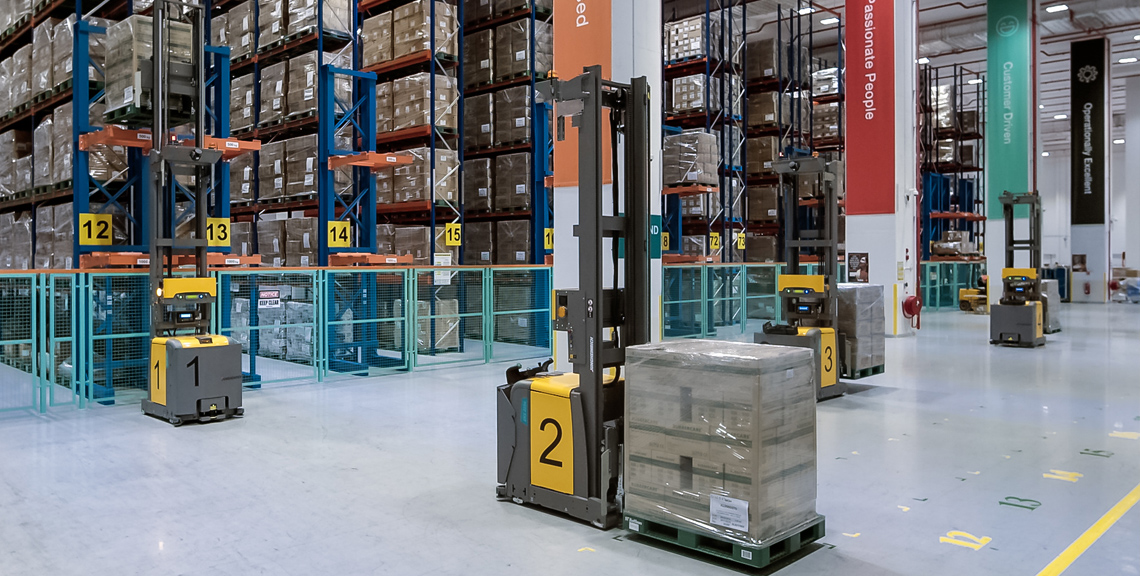
ST Logistics recognises the importance of incorporating automation into our operations and particularly in our storage warehouses. Thus came the inception of the fully-automated Integrated Healthcare Logistics Hub (HLH), our first leap of faith towards adopting significant automation in our operating sites. The conviction to do so is now reaping numerous benefits to our operations team and our performance outcomes.
#1 – Safety
The use of automation is part of a continuous journey towards a safer and more systematic work environment. It upholds our belief that safety is of utmost importance to all of us and we should strive to ensure we maintain gold standards of safety at our worksites. It is complementary to our aspiration to be first-in-class partners and service providers for our customers.
There are several safety features that have been added to the HLH to support the automation systems. These include an Area Access Control (AAC) fencing to keep employees safe from moving Material Handling Equipment (MHEs) within the area. Additionally, each MHE is equipped with sensors that detect obstacles, including humans. In such a situation, these MHEs will automatically halt to prevent collisions between man, goods and machines.
#2 – Security
The AAC fencing also keeps goods secured for customers and triggers a warning system as soon as it detects breaches beyond the fence. These breaches could include tampered locks and doors that are not closed properly along the AAC fence. This system is especially useful for keeping sensitive goods in a safe and secured manner within the facility.
#3 – Efficiency
Automated systems ultimately help to maximise our employees’ productivity and operational hours. In a conventional warehouse, an employee’s entire day could be spent performing physical pick and pack operations. In the HLH, there is a stark difference – our operations crew spend half an hour checking the automation system at the start of the day, while the rest of the order picking is done by the automated MHEs throughout the day.
Automation also helps uplift the workforce – operations crew who would otherwise be managing mundane physical activities could now focus on managing digital systems while a large part of the work is performed by automated systems.
With the implementation of various technologies in the workplace, there exists a common assumption that current employees may be displaced. However, with strong training initiatives in place and the continuous importance given to upskilling programmes, our employees are empowered with digital knowledge, technical skills and adaptability to embrace Worker 4.0 needs.
Before automation, a warehouse worker would spend his time picking and packing, loading, and unloading, as well as manually driving MHEs. Now, operations can be set in motion with just a laptop, eliminating manual labour altogether. Our employees can dedicate their time to other tasks in the supply chain, especially those that cannot be automated.
At STL, we are Ready to serve our Customers, are equipped with the Relevant skills and technology to do so, and are Resilient to the changes imminent to this industry.